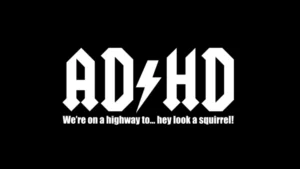In the first blog in this series on Imposter Syndrome, a fictional story was told about a person who felt like an imposter in their workplace. In the second blog there was an overview of Cognitive Behavioural Therapy and why it’s the method of choice for counsellors and life coaches who are working on issues that stem from our thoughts. Pop back and have a read if you need a refresher.
In this third blog we will look again at the story in context of a CBT technique that helps us to understand the underlying limiting belief. The aim of this third blog is to de-mystify the processes that are used during talking-therapies and also to provide a structure for your thoughts if its difficult to put your own Imposter Syndrome experiences into a useful format.
As always, if you resonate strongly with the content of these posts we would highly recommend you talk to someone. This really can be anyone you trust as the most important thing is to feel safe when you tell your own story. You could use the technique described in this post as a self-help tool but please do so with caution…. If you have recurring patterns of negative beliefs, feel sad or anxious in everyday situations please seek out professional help. Engaging with a counsellor or life coach doesn’t have to be a long-term thing – just a handful of sessions can make a massive difference to how you understand your position in life, and can bring insights and revelations that are hard to come upon alone.
The technique we are going to look at in this blog is called A to F. Its very intuitively named because there are six stages to the technique each one of which starts with the letters A B C D E F. It helps that its simple in structure because otherwise it might distract from the potential complexity of the problem at hand.
Very briefly, here is each stage:
A = Activation
What is happening when you start to think about the limiting belief?
B = Belief
What exactly is the limiting belief?
C = Consequence
What happens as a result of you thinking in this way?
D = Dispute
What evidence is there that the belief is not true?
E = Exchange
What can you tell yourself instead?
F = Future
What can you do in the future ?
A cautionary note before we go into further detail. The example we are going to look at – someone has a bad experience in a work meeting resulting in them thinking they aren’t credible in their job and no one values them – will be used in a relatively one-dimensional way and is just to illustrate how the technique works. In reality, the limiting belief that is presented – no one values me – may not be at the root of the issue and a counsellor of life-coach will be skilled at working through several iterations of this tool to get to the real issue.
So, let’s get into the details. I’m going to start with B = Belief first as this is the thing we know the most about already. The coach will ask; What is the underlying belief? The person will respond; I think I don’t add value in my role, or I think I don’t have any credibility at work.
The coach will ask questions around this like; What do you mean by credibility? What is it about having credibility that’s important to you? Do you believe you can be credible? The answers to these questions will help the coach understand more than just the presented statement itself and will give an indication about whether the belief is related to their skills and capability, or their underlying values and identity.
Again, it’s hard to get to this level of understanding without discussion. It’s also useful for everyone involved to know what the person’s underlying Values are and this may well be a separate exercise that the counsellor or coach will use.
Let’s look at A = Activation next. In the example given, the person experiences the feelings of lost credibility when they go back to work the day after their presentation, once they’ve digested the feedback from their colleagues and manager. This is their response to the initial trigger event though, and what we are looking for with Imposter Syndrome is a repeating cycle of events where the limiting belief occurs.
In discussion, a coach is likely to ask things like; What were you doing when you last felt this way? What was it about that situation that made you think you had no credibility? What did they say, What did they do, etc. By understanding this the coach can know if the limiting belief is only felt during a specific situation e.g. being at work rather than being at home or being asked to do a presentation rather than being asked to send an email. This helps understand the extent of the issue, and gives a hint about whether the limiting belief being presented is the actual one at play. For example, if the person’s belief that they have no credibility pops up when they are discussing hair colour with their stylist, that would merit a deeper discussion about the limiting belief to understand why it cropped up at the hairdressers instead of at work. If this is the experience, a coach or counsellor is trained to investigate this in a carefully managed and harmless way.
With C = Consequence, the coach is looking to find out what happens as a result of the limiting belief. There are so many different consequences that it would be impossible to list them all. The coach will ask things like; What emotion words can you use to describe how you feel when you think the limiting belief? What physical consequences are there? What impact does it have on you socially? What does it stop you doing? In the example given in the first blog, the person feels isolated and lonely and becomes quite introverted. If this isn’t their natural way then they are likely to start to feel unhappy pretty quickly.
A good coach will know that the answers to these questions may indicate the need to engage the person with a counsellor instead. Although counsellors and coaches use the same tools, a counsellor has an advanced set of skills and is able to diagnose and treat mental illness whereas a coach can’t do this. If the person responds to the Consequence questions with evidence of eating disorders, self harm or depression then a counsellor or GP should be called in.
If no Consequence is evident then the coach will look to investigate whether the belief is a limiting one at all, or whether there is a pay-off happening that means the person feels OK about the limiting belief because it results in something else that’s better. An example of this would be if the person gets extra time and attention from work-support or training because they’ve expressed their issue with credibility at work, and the benefits of the training outweigh the downside of the limiting belief.
Next on the list is D = Dispute. When you dispute something you are looking for the opposite argument so the coach will ask questions to find out whether the limiting belief is actually true or not. So the coach might ask; What examples do you have when you didn’t feel the limiting belief? What is it about the evidence that could be wrong? What did you say to yourself to make the contrary-evidence not count?
In the example given in the first blog, the person has made some assumptions about what their colleagues believe, and these assumptions would be worth challenging. For example, they assume that their colleagues aren’t interested but is this just a normal thing and nothing to worry about? Could the person ask their colleagues how the content of the presentation impacts their day to day work? The answer could be that it doesn’t have any material impact on them and that’s why they weren’t more positive with their feedback or it could be that they trust the person wholeheartedly to manage that part of their job and this means they don’t need to get too involved.
Take the manager next. The blog notes that the manager is usually more engaged and cheerful, and he seems a bit distracted during the coffee machine conversation. If this is not his normal manner was it helpful to assume he wasn’t enthusiastic and impressed by their presentation? Given that the manager had a challenging conversation with the stakeholder during the meeting perhaps the manager is under some scrutiny or pressure from on-high that means he had a higher priority in that moment? The person could have a 1:1 discussion, with more time for open dialogue, when they could discover that the manager was in fact deeply impressed and the presentation kicked off a strategic discussion of great importance. Without asking, no one will ever know.
Finally, the stakeholder in the meeting didn’t respond in the way the person hoped for. Did the person know the stakeholder’s personality before hand? Are they known for asking questions or are they known for being self-obsessed and dismissive? If the latter, then their reaction to the presentation was not about the person or the presentation at all but all about the stakeholder.
With all of these colleagues, the person has made assumptions about what they know and each of these assumptions has resulted in the limiting belief gaining strength. The key to unpicking the limiting belief is to lean on these disputes until the limiting belief dissolves away to nothing. Again though, this won’t happen without conversation and discussion so that’s always the best place to start.
With E = Exchange, the person is looking to replace their limiting belief with something more useful. You could think of this as finding a new baseline or reference point to use in the future. The new belief must be a positive one and affirming in nature so that the person can build themselves back up. Of course it also has to be realistic and believable so its likely that the coach will spend a bit of time on this until the person has something that they can really hang onto.
The coach will ask What can you say to yourself in place of the limiting belief? It could be as simple as I do add value at work, or I am credible at work, but there needs to be some thing more detailed there to back this up. In other words it needs to be evidenced. The coach may ask – possibly several times – What else could you say? – until the person settles upon something that meets their needs. Again, knowing what the person’s underlying Values are will help this a lot. For example if one of the person’s underlying Values is to feel connected to other people, then the Exchange belief might be “I am credible at work because my colleagues value what I contribute”.
Finally the coach will look at F = Future. This is about setting in place a strategy for using the new positive belief in practice. During this section the coach will likely revisit elements of A = Activation and C = Consequence to make sure that the person knows what to expect and knows what symptoms there will be if the new belief isn’t working. Most importantly that they will know what to do if these symptoms do show up.
Don’t worry though, with a new positive belief in place this won’t feel as challenging as it did the first time round, and the person will leave their session with a huge smile on their face knowing that they are able to honour their true values and beliefs.
Clara Anderson
Technology Delivery Lead and Coach clara@futureyoucoaching.co.uk
This is the third in a series of blog posts about Imposter Syndrome.
If you’d like to discuss a limiting belief with someone, or to find out what your Values are, please email in confidence to clara@futureyoucoaching.co.uk
Clara is offering a free 40 minute session to anyone who is a friend of HoC. She can also refer you on to another coach if, for example, you prefer a male coach.




